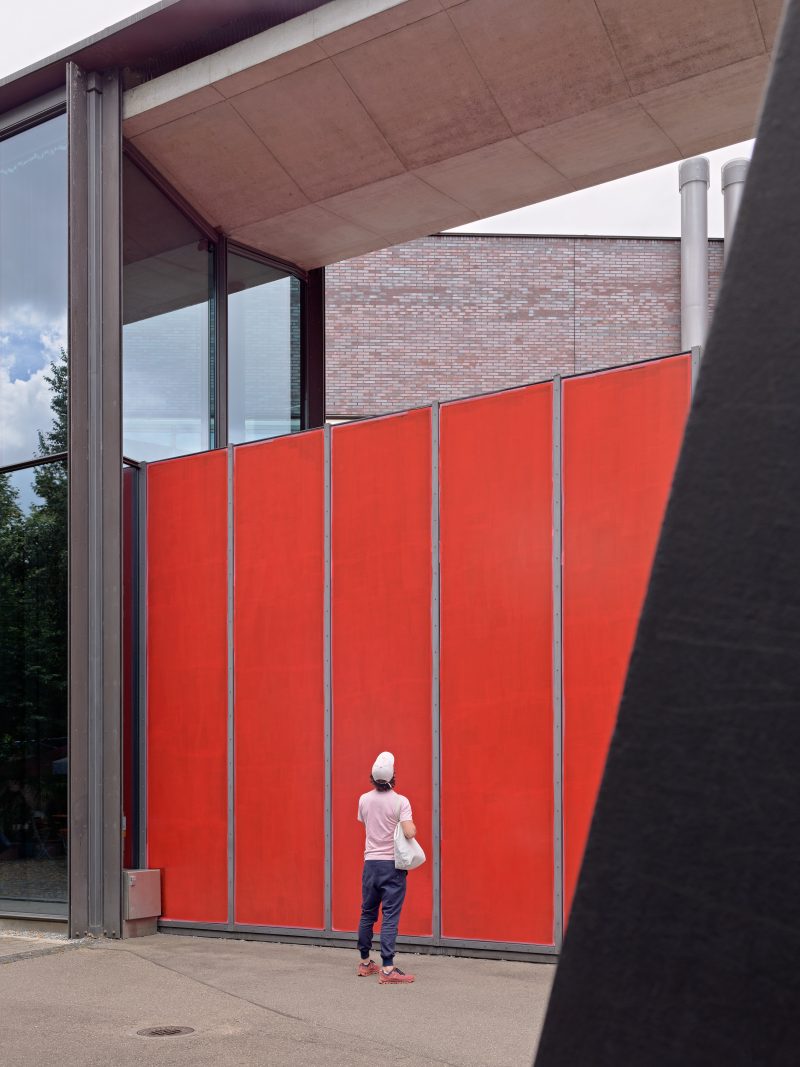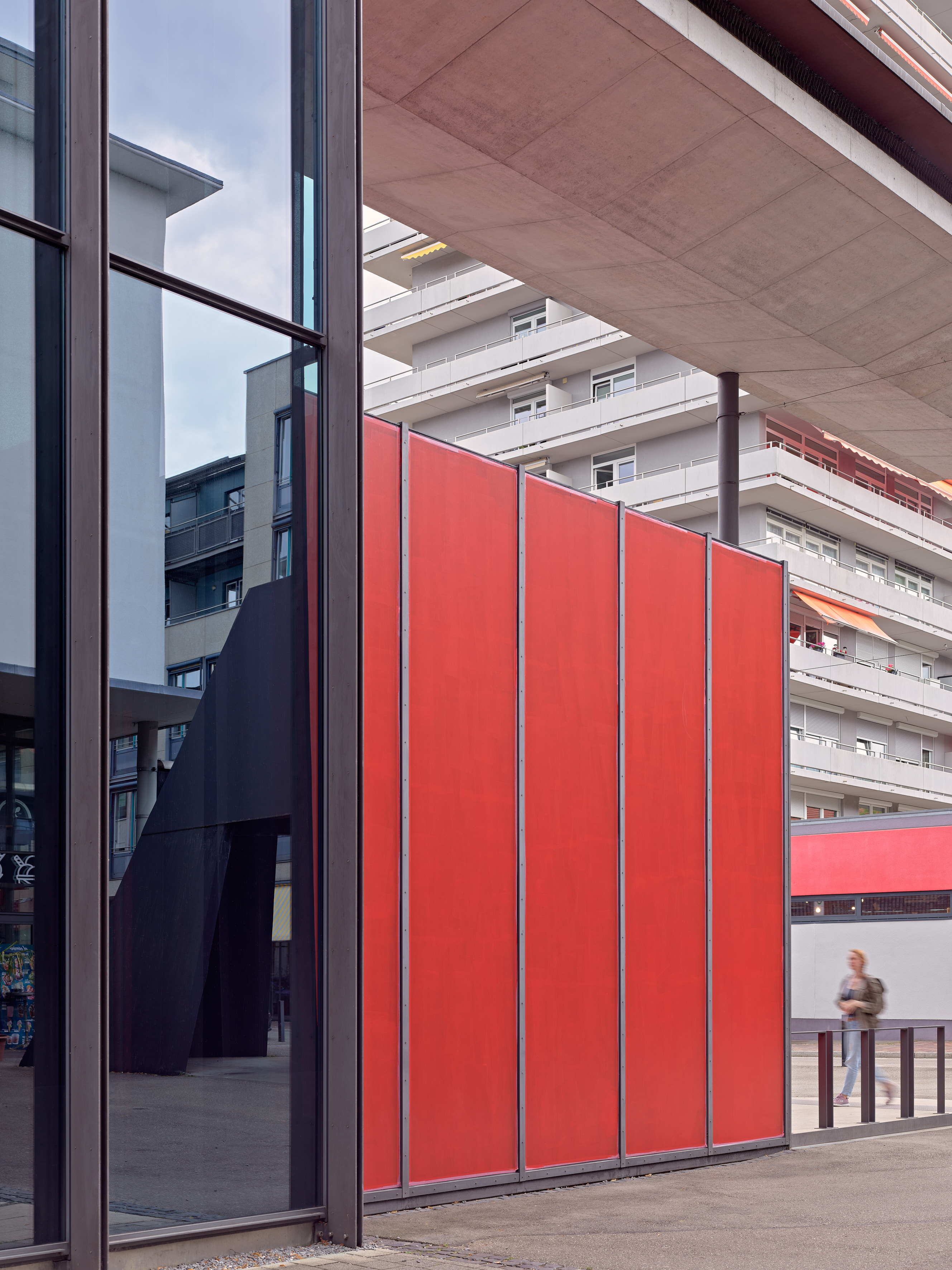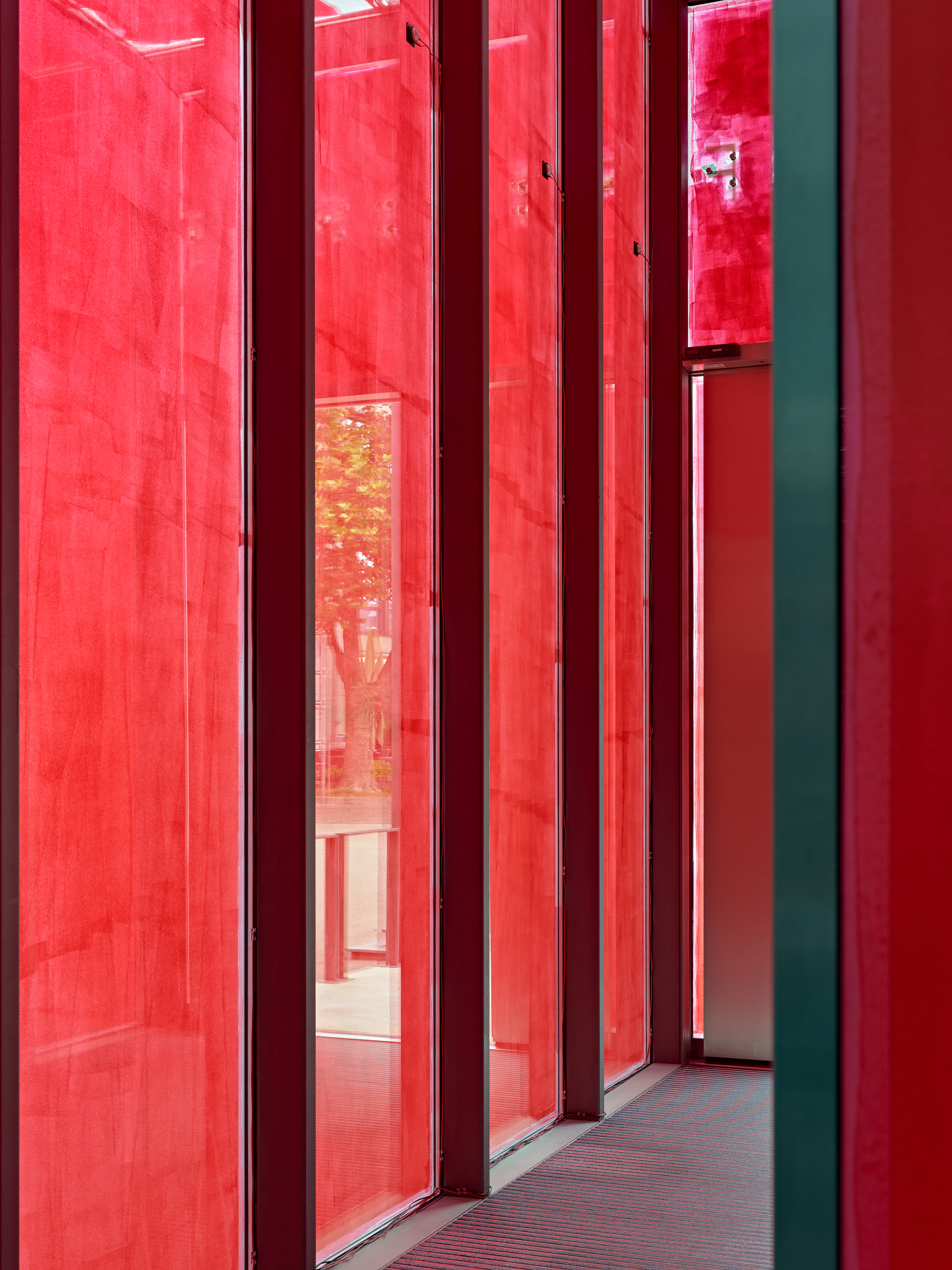Paint the Town Red




STIMMEN Festival,
Burghof Lorrach, Germany
04.07.24 – 04.08.24
16 channel audio installation (looped), painted glass, Ai generated voices
Featured Languages: Afrikaans / Bulgarian / Chinese / Czech / Dutch/ English / French/ French Canadian / Malayalam / Maltese/ Polish / Russian / Sinhala / Slovak / Slovenian / Spanish/ Telugu / Turkish / Ukrainian / Urdu / Vietnamese / Welsh
Paint the Town Red transforms the glass entrance of the Burghof Lorrach using vibrant colour and immersive sound. This piece invites visitors to engage with a new vocal composition created entirely from AI-generated neural voices, sourced from publicly accessible translation sites such as Google Translate and DeepL. By leveraging neural machine translation software, the installation challenges visitors to reflect on their relationship with online translation, questioning the boundaries between the real and the artificial, the accurate and the flawed. It prompts contemplation on the consequences when AI translation lacks cultural context.
The title, Paint the Town Red, derives from a common English phrase signifying celebration and enjoyment. The installation literalises this phrase, imagining a scenario where buildings are painted red. This playful interpretation underscores the potential pitfalls of literal translations and the more serious consequences that could arise from such errors. Through colour and sound, the artwork redefines the architectural space of the Burghof Lorrach, while emphasising the significance of human language and its many stories and voices.
AI voice synthesis is not a new phenomenon, but recent advancements in deep learning have enabled the generation of highly natural-sounding speech. Some of these AI-generated voices are strikingly human-like. Over the past few years, there has been a significant shift in translation technology, with automated translation becoming ubiquitous on websites and social media. However, these models often lack accuracy, and users are rarely warned about potential mistranslations. This installation captures a pivotal moment in the history of AI-generated neural voices, highlighting their rapid development and the public’s access to these technologies.
Positioned at the most public point of the building, the entrance, Paint the Town Red transforms the corridor into a space for listening, reflection and exploration. Sixteen speakers installed on the glass create an auditory experience where the physical qualities of the space enhance the work’s impact.To understand and shape these new AI voices, Conde Ruiz employed techniques akin to those of a choral director working with a newly formed choir. Over 150 AI voices were “cast” through a series of audition exercises. The results were astonishing: some voices sang, some whispered, others formed French sentences, and some sounded pained or metallic. The voices that closely resembled human speech were often slightly out of tune, creating a unique harmony with new tonal colours
During the process, the translation engines often produced incorrect and nonsensical outputs. For example, a translation from Microsoft Bing resulted in a nonsensical repetition:
“Je vais devoir aller au centre commercial, et je vais devoir aller dans le monde du monde, et je vais devoir aller voir ce que je vais devoir faire maintenant, et je vais devoir aller dans le monde du monde.”
The translation reads:
“I’m going to have to go to the mall, and I’m going to have to go into the world of the world, and I’m going to have to go into the world of the world, and I’ll have to go see what I’m going to have to do now, and I’m going to have to go into the world of the world.”
These errors illustrate the limitations and challenges of AI translation, reinforcing the installation’s central theme: the importance of human oversight and cultural understanding in translation technologies.
Paint the Town Red is a reflective journey into the intricacies of language, the advances in AI, and the profound human connection that underpins communication. By transforming the entrance of the Burghof Lorrach, it invites visitors to explore, listen, and contemplate the evolving landscape of translation and voice synthesis, emphasising the need for careful consideration and monitoring of these powerful technologies.
Credits
Artistic concept and composition: Esmeralda Conde Ruiz
Creative producer: Eira Szadurski
Sound engineer and lead technician: Jan Brauer
Sound engineer (London): Nick Powell
Commissioner: Timo Sadovnic, Burghof Lorrach
Production assistance: Nadja Stocker
On site technicians: Kevin Lickert, Torsten Sarfert
Lighting consultant: Marty Langthorne
Eco friendly glass paint: Thorndown Paint (UK)
Supported by Sparkasse Bank
Thank you to Simon Brauer, Matthew McGinity, Thorndown Paint, William Hammonds.
Photography by Mark Niedermann